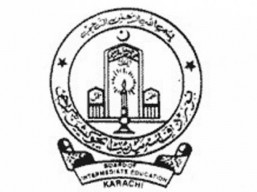
Acid violence in Pakistan came in the global limelight after filmmaker Sharmeen Obaid Chinoy’s documentary ‘Saving Face’ received an Oscar in 2012. Three years on, there is more awareness on the issue. However, the number of reported incidents has significantly gone up, particularly in Punjab.
With improved mechanisms and better data collection, more cases of the gender-based violence are being reported across the country. Significant progress has been made in establishing a robust framework to cover crimes arising from acid violence, says a report on acid violence in Pakistan that was launched on Friday.
Family fears policeman booked for throwing acid on girl may walk free
The report confirms that the attacks reported between 2007 and 2012 had the highest incidence in Punjab, particularly in Multan, Muzaffargarh, Rahim Yar Khan and Bahawalpur districts.
In 2011, the federal government adopted the Criminal Law (Second Amendment) Act 2011, which introduced a specific offence in relation to acid violence and increased criminal penalties for offenders.
The murder and attempted murder provisions were already established in the Pakistan Penal Code (PPC), but the hurt provisions were inadequate to properly criminalise and punish perpetrators.
Preventing acid attacks
The addition of section 336-A has ensured that a specific offence, which is non-bailable and non-compoundable, and with adequate sentencing provisions has been established.
According to an analysis by Acid Survivors Foundation (ASF) included in the report, a number of trends have been on the increase.
The analysis indicates that 17 to 30-year-old women were most at risk, although a significant number of men and children below the age of 17 were also affected. It states that the data was indicative of acid violence as gender-based violence, with a majority of victims and survivors being women and girls.
Acid attacks: Need for post-trauma care of victims stressed
Data collated since 2012 confirms this broad trend. In the most recent years, the figures demonstrate a significant gender disparity. The total number of acid victims reported from 2007 is 1,231, with 675 girls and women, 386 men and boys, five trans-genders. In 165 cases, gender was unknown.
The report says that focus group discussions held in Islamabad, Peshawar, Bahawalpur and Multan confirmed this overall trend. However, it is also clear that acid attack is not a female specific phenomenon and that a significant number of victims and survivors (31.36 per cent) are male.
National Commission on the Status of Women chairperson Khawar Mumtaz underscored the challenges of data collection in the country as she thanked the ASF for providing and collating accurate figures for various gender issues. She said although acid violence was relatively lower in Sindh but it was on the rise.
Published in The Express Tribune, October 31st, 2015.
1736938320-0/BeFunky-collage-(52)1736938320-0-405x300.webp)

1736235029-0/diddy-(50)1736235029-0-165x106.webp)
1736930668-0/Untitled-design-(97)1736930668-0-165x106.webp)
1736931444-0/BeFunky-collage-(51)1736931444-0-165x106.webp)



1736928680-0/Tribune-N-(2)1736928680-0-270x192.webp)


1732012115-0/Untitled-design-(14)1732012115-0-270x192.webp)
1736844405-0/Express-Tribune-(2)1736844405-0-270x192.webp)










COMMENTS
Comments are moderated and generally will be posted if they are on-topic and not abusive.
For more information, please see our Comments FAQ